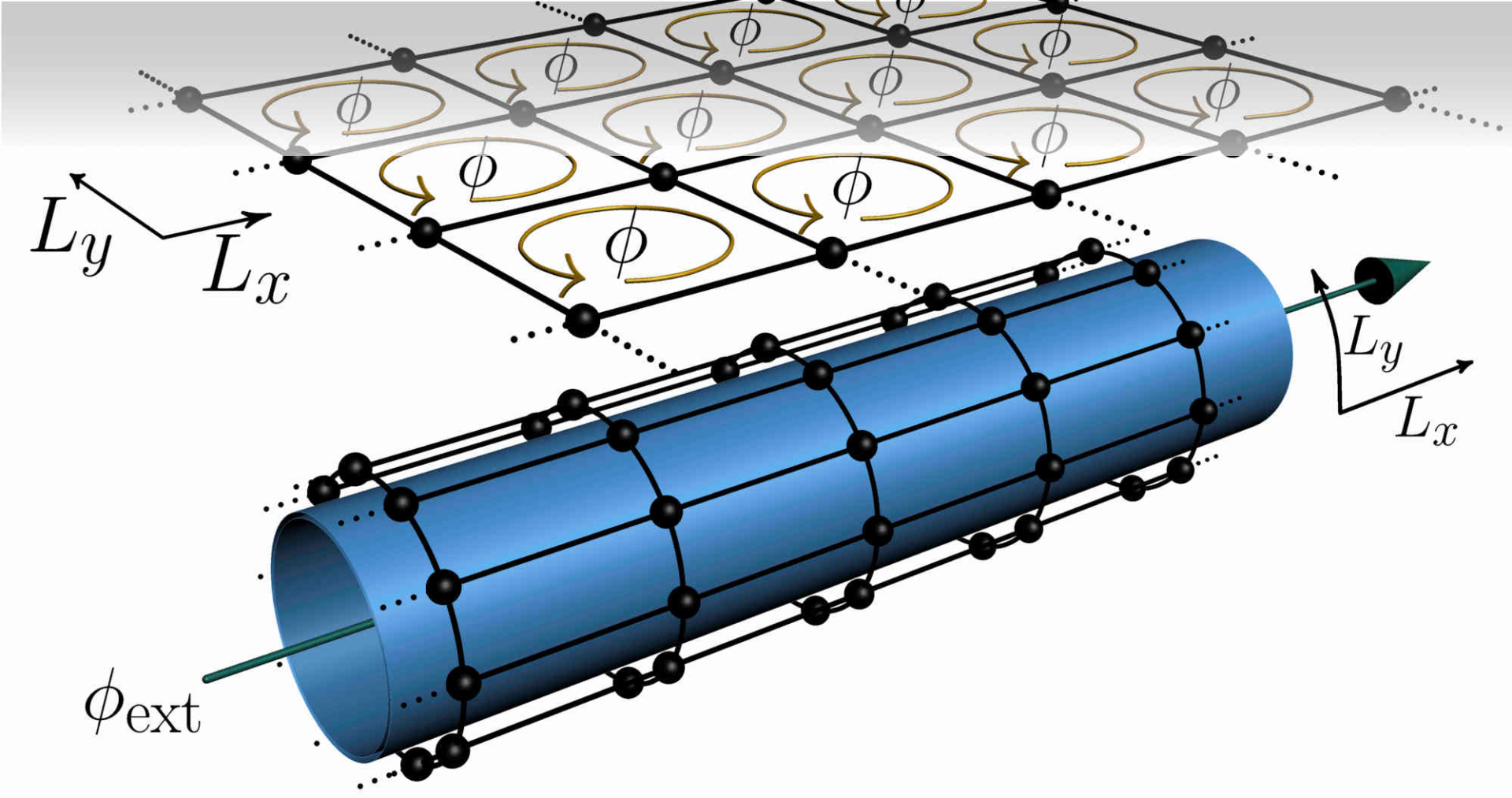
A close view on "Stability, phase transitions, and numerical breakdown of fractional Chern insulators in higher Chern bands of the Hofstadter model"
PQM member Dr Gunnar Möller is pleased to share the latest results emerging from the collaboration with his former PhD student Bart Andrews and Prof Titus Neupert from the University of Zürich.
In this work, we deploy state-of-the art density matrix renormalisation group (DMRG) calculations to examine the stability of exotic fractional quantum Hall states. These states are also known as fractional topological insulators, and were first predicted by Möller & Cooper [PRL 115, 126401 (2015)]. In topological flat bands, the Chern number controls at which densities fractional quantum Hall liquids can be stabilised. In our new publication, our team examine high Chern number states in the geometry of an infinitely extended cylinder. While it maybe sounds counterintuitive, this set up is actually most suitable for numerical analysis! Exploiting this trick, we find new evidence for the stability of many of the predicted states.
To measure the stability of quantum Hall states we examine the energy-gap required to create localised excitations in the system. The gap tends to become smaller as the Chern number increases – hence making the detection more challenging. Examining Chern bands up to a high Chern number of C=5, we have detected two of the predicted states even in these highly twisted band structures. We also found Chern insulator states at many others of the preferred densities predicted in lower Chern bands.
This work is published in Physical Review B 104, 125107 (2021) (see: at Physical Review B | on arXiv).